Over the course of human history, there have always been individuals who have what it takes to push the boundaries, to make breakthroughs, to think of what others can’t conceive, to do what others don’t have the courage to execute, to dream about what seems to be impossible. Some call such people visionaries – or in today’s zeitgeist: disruptors.
At the turn of the ninth century, in mainland Southeast Asia a man with such qualities emerged at the right place and the right time. A prince called Jayavarman had the ambition to achieve what no one had ever achieved before: uniting the Khmer people under one central command as opposed to the loose confederations of principalities that was the norm. Taking the title Jayavarman II, in the year 802 CE the new king declared Khmer’s independence from Java. Modern historians, however, have different interpretations of the exact location of the “Java” mentioned in an inscription that chronicles the establishment of the Khmer Empire. Some believe it refers to the island of Java where the powerful Medang (Ancient Mataram) kingdom ruled. Others argue that it refers to different parts of Southeast Asia, including Champa, a regional Hindu power in what is now central and southern Vietnam.
For most of the time, Jayavarman II ruled the newly-unified polity – which would grow into an empire in the subsequent decades and centuries – from Hariharalaya, the capital of the ascendant state. Upon his death, the Khmer Empire’s first monarch was succeeded by his son, Jayavarman III. However, it was the latter’s cousin (Jayavarman II’s nephew) and successor, Indravarman I, who embarked on a temple-building spree which would become the standard followed by the empire’s future rulers.
In 879 CE, Indravarman I commissioned a temple compound in Hariharalaya built to honor his father and grandfather, as well as Jayavarman II. Three shrines were dedicated to each of them with an additional three constructed directly behind to revere their respective wives. Known today as Preah Ko, literally “the Sacred Bull” due to the presence of Nandi statues – signifying the compound’s Shaivite (the worship of Shiva) origin – it now stands as a reminder of the early days of the Khmer Empire.
Constructed using bricks and sandstone, this east-facing temple compound is visibly smaller than the likes of Angkor Wat and Bayon which were built centuries later. However, upon a closer inspection, the six shrines of Preah Ko bear intricate details that are comparable to those at the more famous ancient temples near modern-day Siem Reap. Decorated lintels bearing characters from Hindu mythology like kala or kirtimukha (usually depicted as a fierce-looking face with bulging eyes and a menacing grin) and makara (discernible for its elephant-like trunk, which is a departure from the origin of the word in Sanskrit which means “crocodile”) reminded me of the ancient Hindu/Buddhist temples in Java whose main entrances to the sanctum are usually decorated with both creatures.

Some say they are dvarapalas, but to me they look like Nandiswara and Mahakala, the door guardians of a Shaivite temple’s sanctum
Just a few years after Preah Ko was completed, Indravarman I commissioned what would become the official state temple during his reign. Called Bakong, the structure took the shape of a stepped pyramid. And when seen from above, its layout shows a striking resemblance with that of Borobudur, a massive Buddhist shrine built by the Sailendra dynasty of Java which was completed in the first half of the ninth century CE. This led to the theory that Bakong was in fact inspired by Borobudur, exemplifying the purported past relations between the two regional powers. The main difference is Bakong was dedicated to Shiva, one of the Trimurti in Hinduism, which explains the absence of stupas – bell-shaped structures usually associated with Buddhism – like those adorning Borobudur’s multiple levels.
Bakong quite possibly ushered in an era where subsequent Khmer kings would build grand state temples to cement their image as the divine rulers of the Khmer people. And those monarchs really took the word ‘grand’ seriously as the structures only got bigger and more elaborate in the centuries that followed, culminating in the construction of Angkor Wat, the main reason people from all over the world come to Cambodia today.
Following the death of Indravarman I in 889 CE, his son Yasovarman ascended the throne and became the new king of the Khmer Empire. During his rule, Hariharalaya saw the construction of its last major temple before the capital was moved to a location closer to the river and Tonlé Sap, important sources of water for the growing empire. Completed in 893, Lolei was dedicated to Yasovarman I’s father and grandfather, as well as their respective wives, giving this temple compound four towering shrines built in an architecture style similar with that of Preah Ko.
Situated around 14 km from the heart of Siem Reap, the Roluos group of temples (which includes Preah Ko, Bakong, and Lolei) in what used to be Hariharalaya are understandably less popular among modern-day tourists visiting this part of Cambodia. But they are silent witnesses of the early days and years of the Khmer Empire before its center of power moved to Yasodharapura, the new capital founded by Yasovarman I, better known today as Angkor.

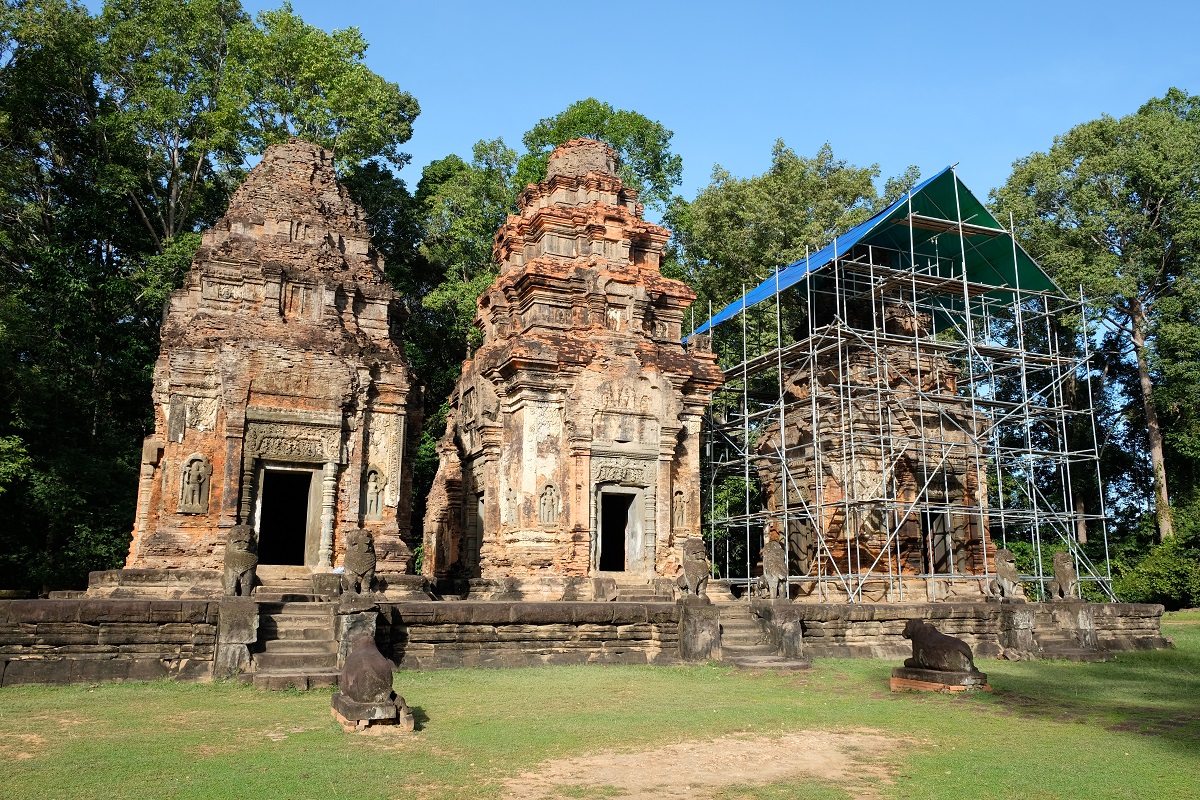

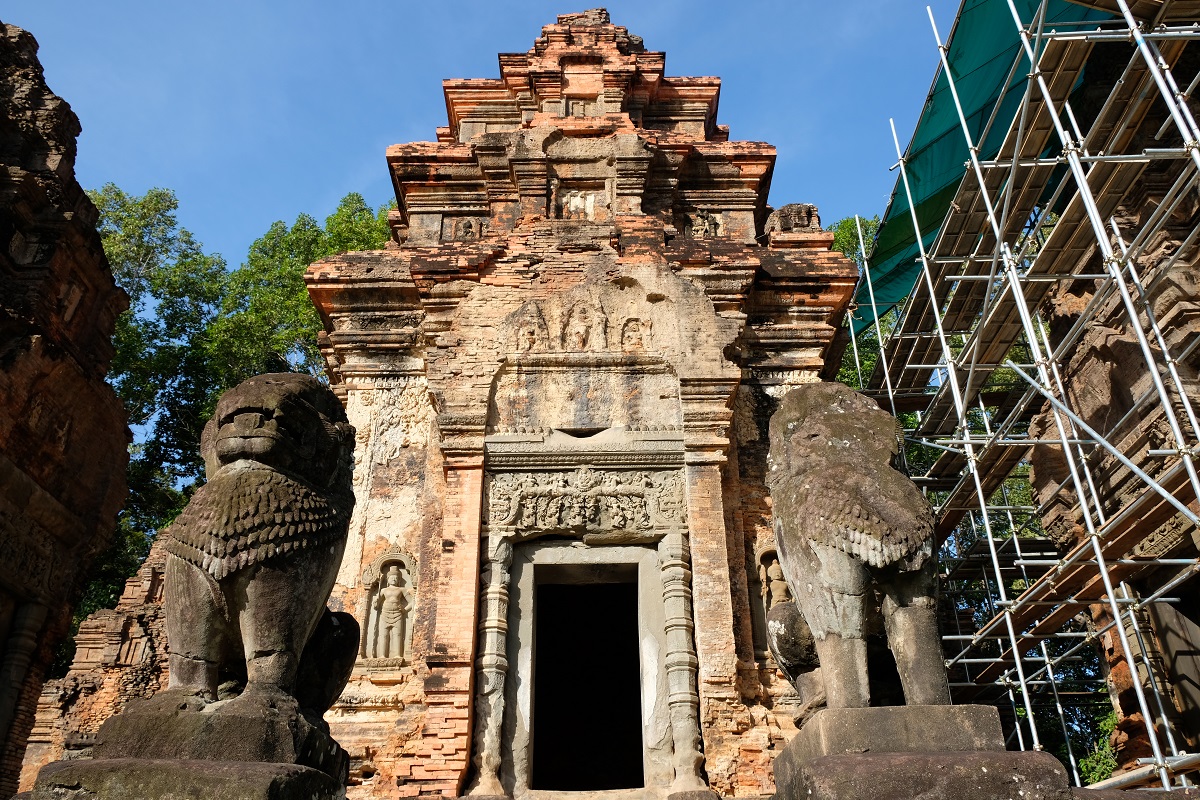

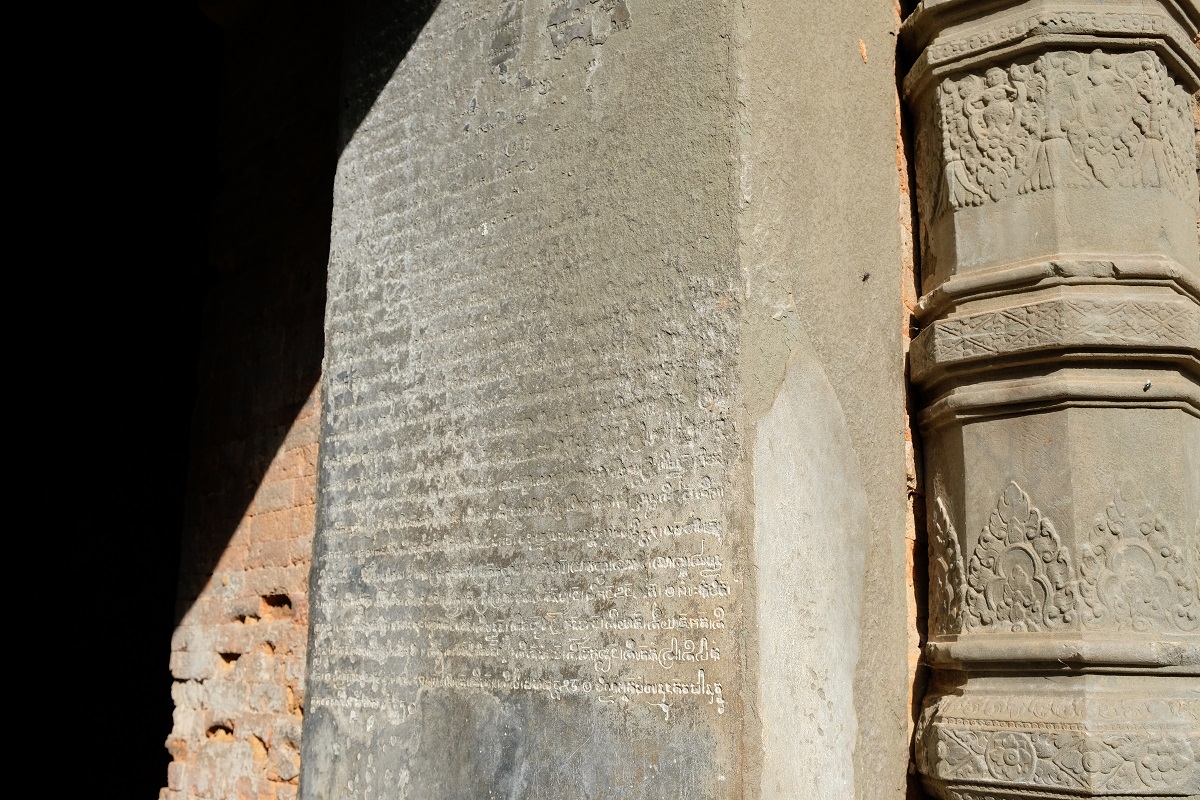
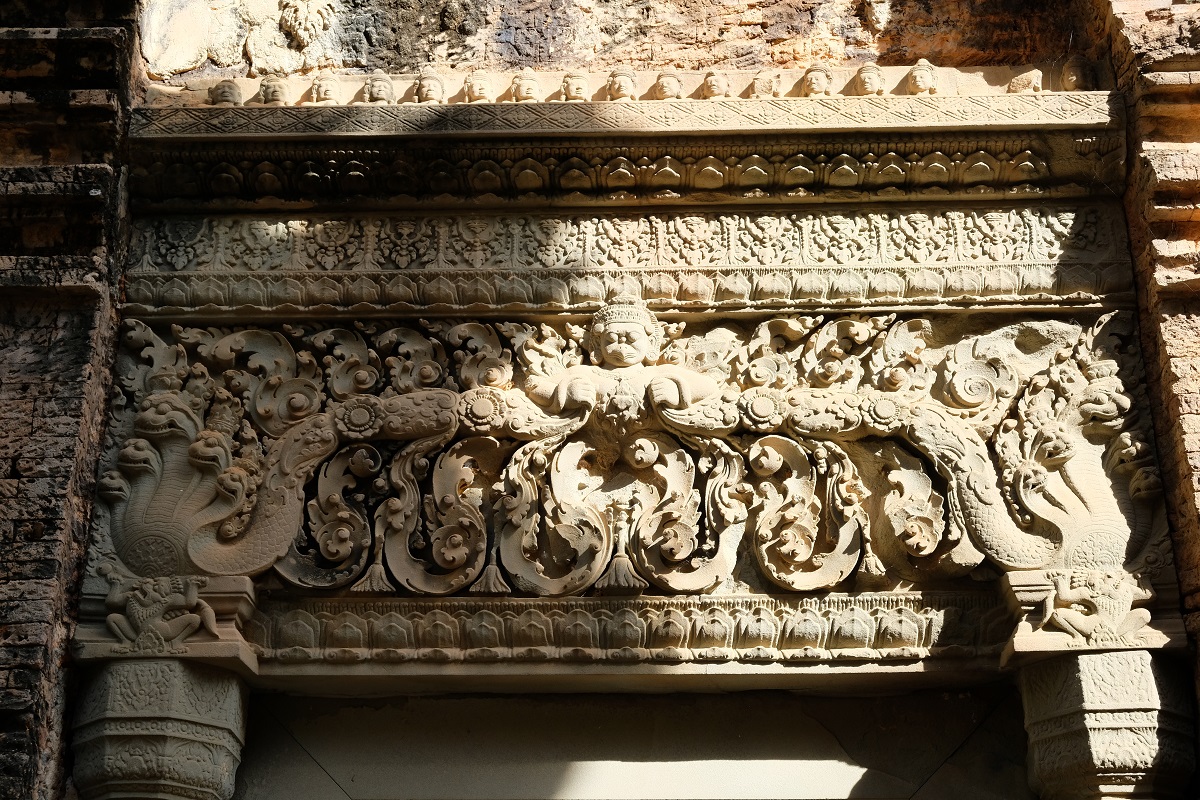

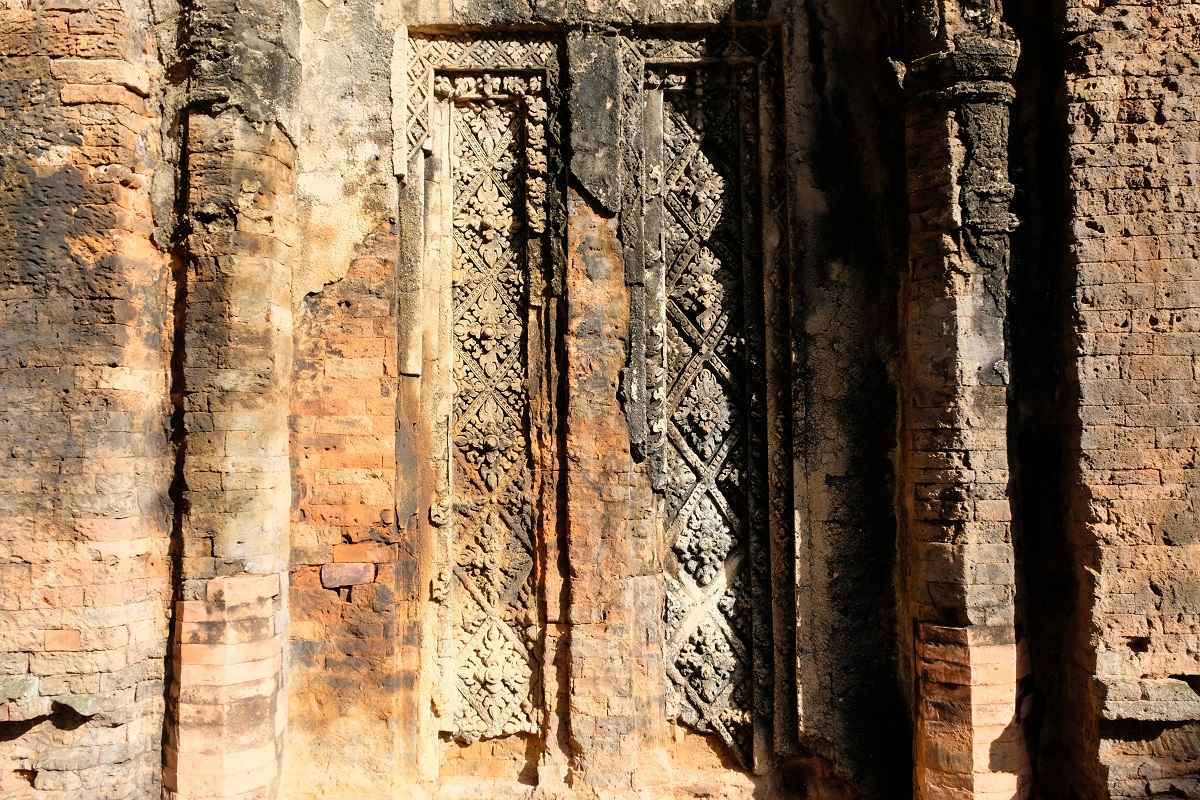




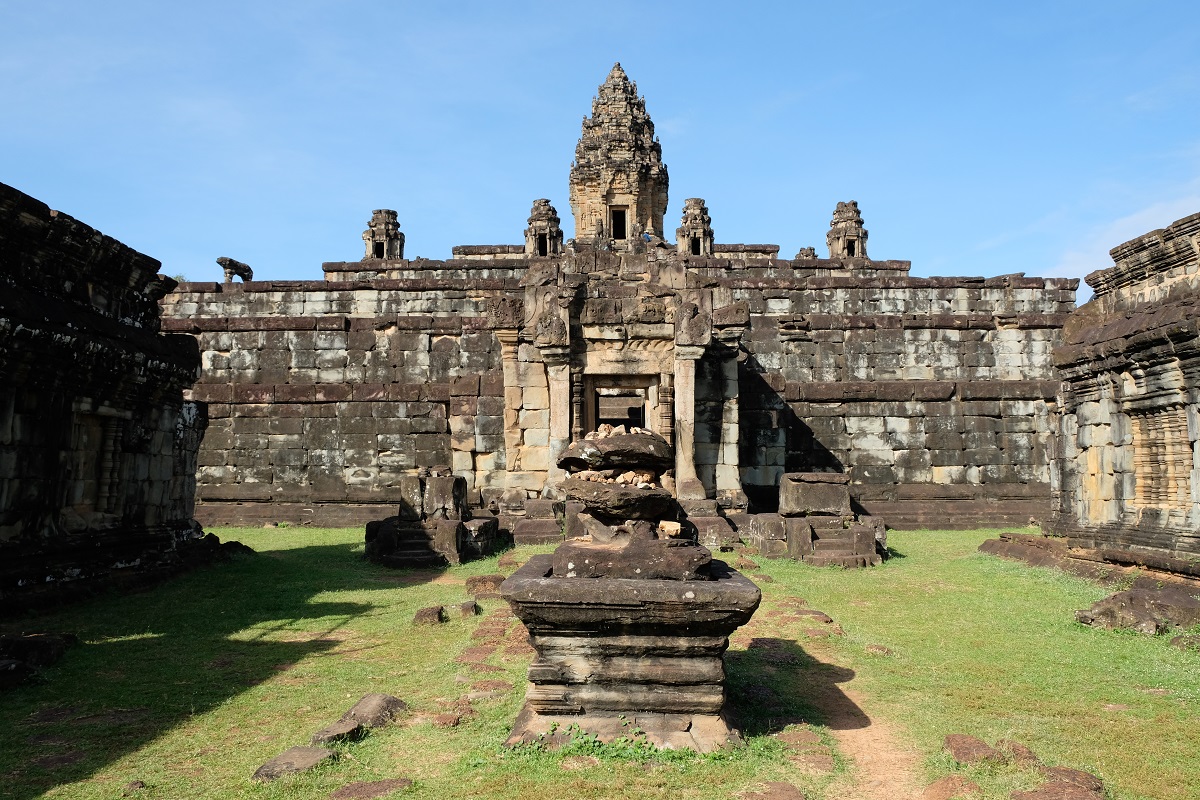


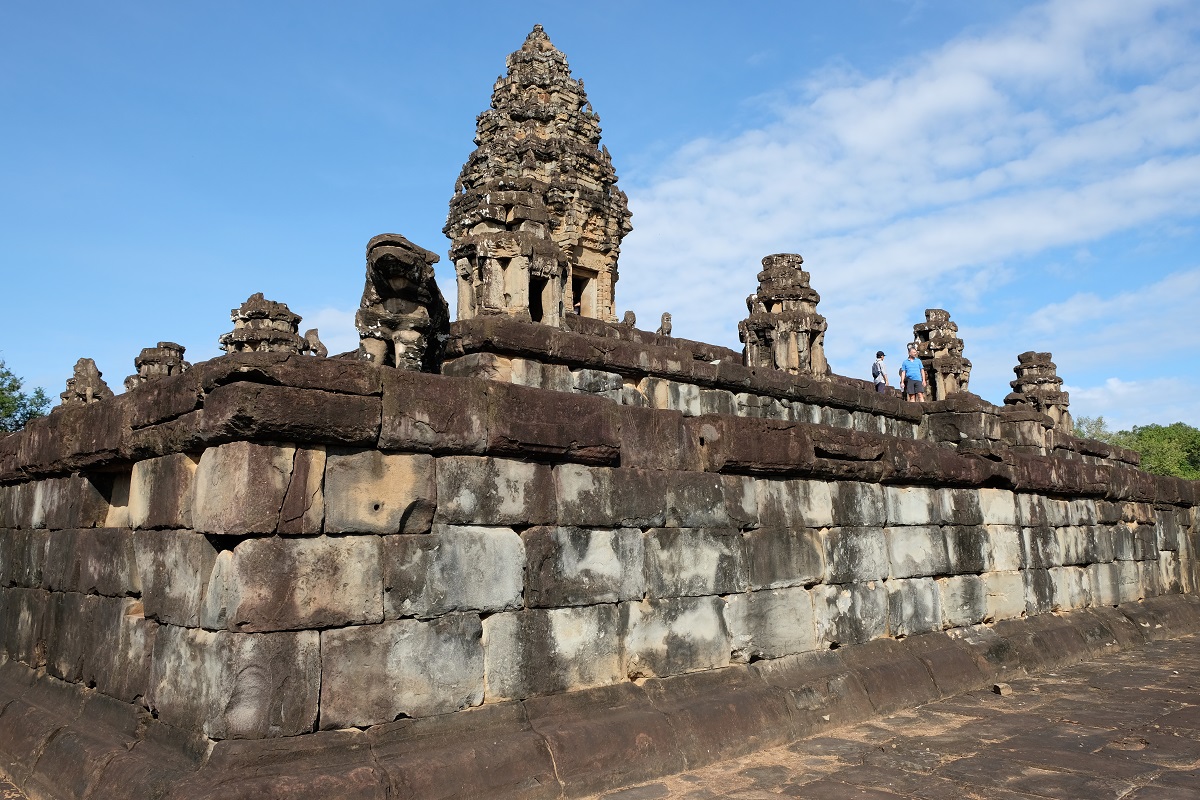

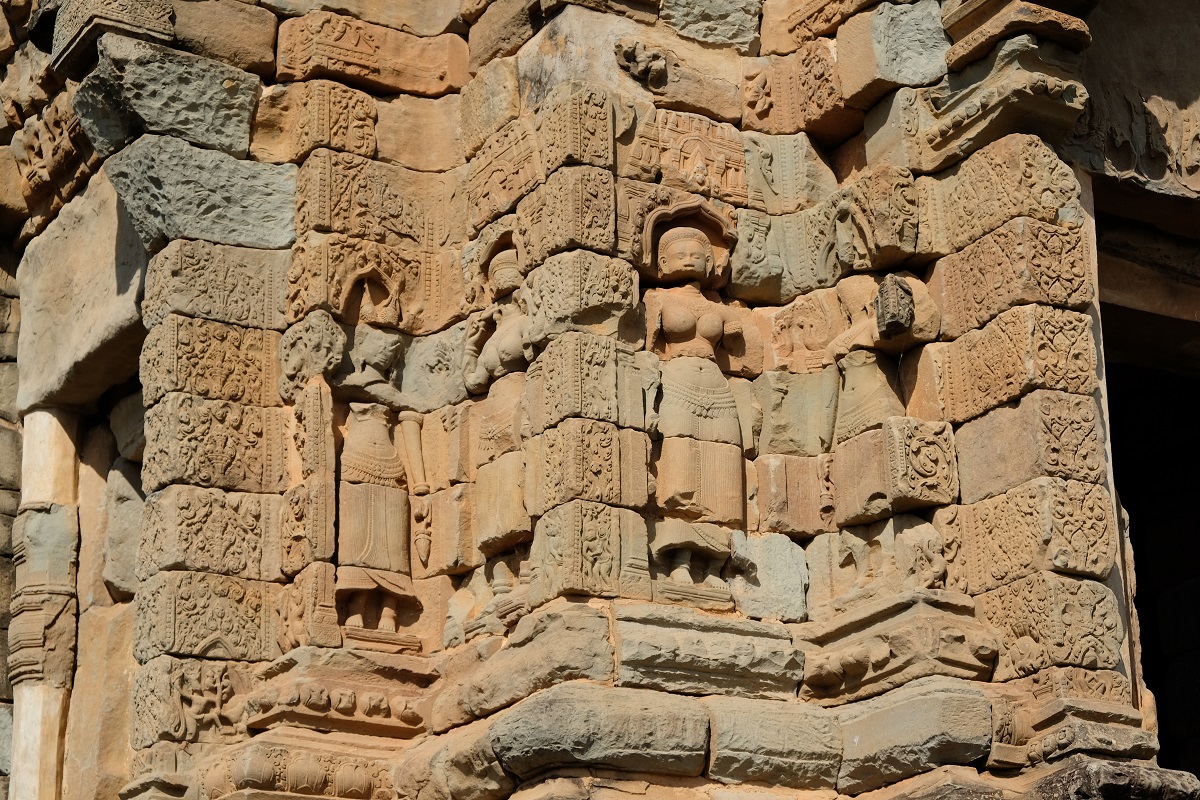
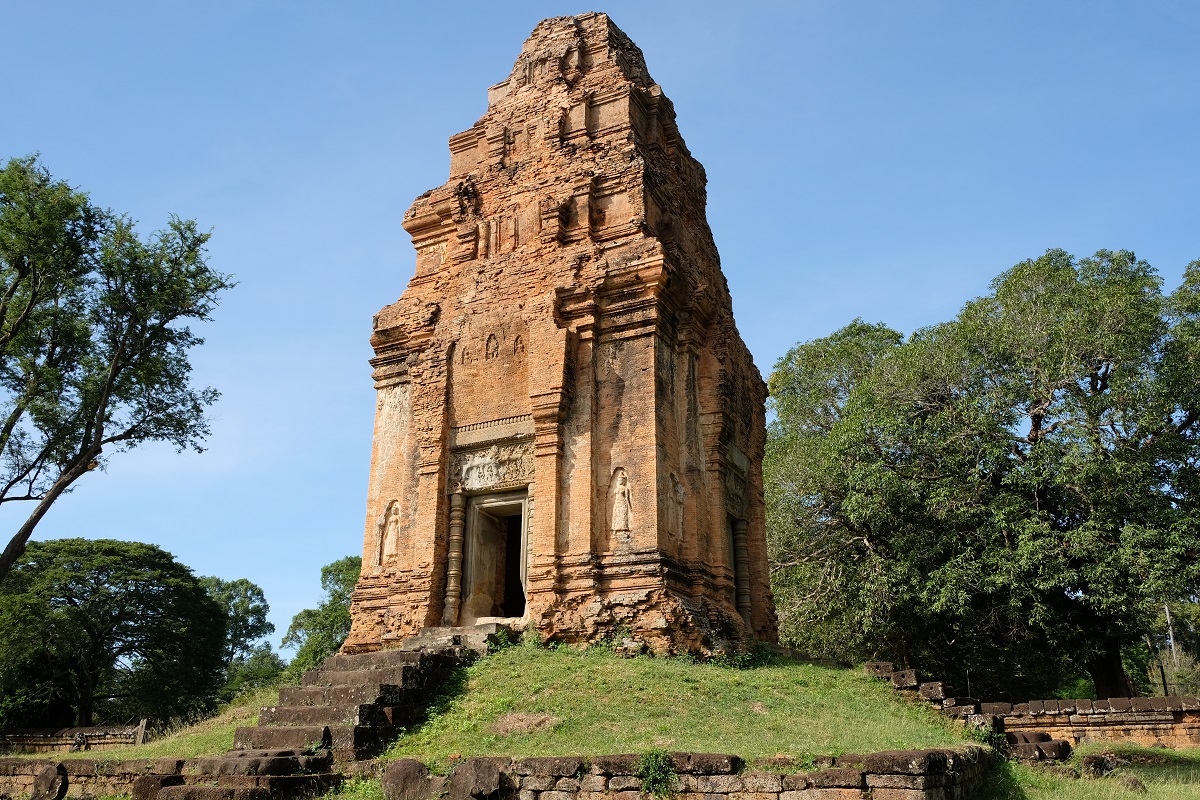

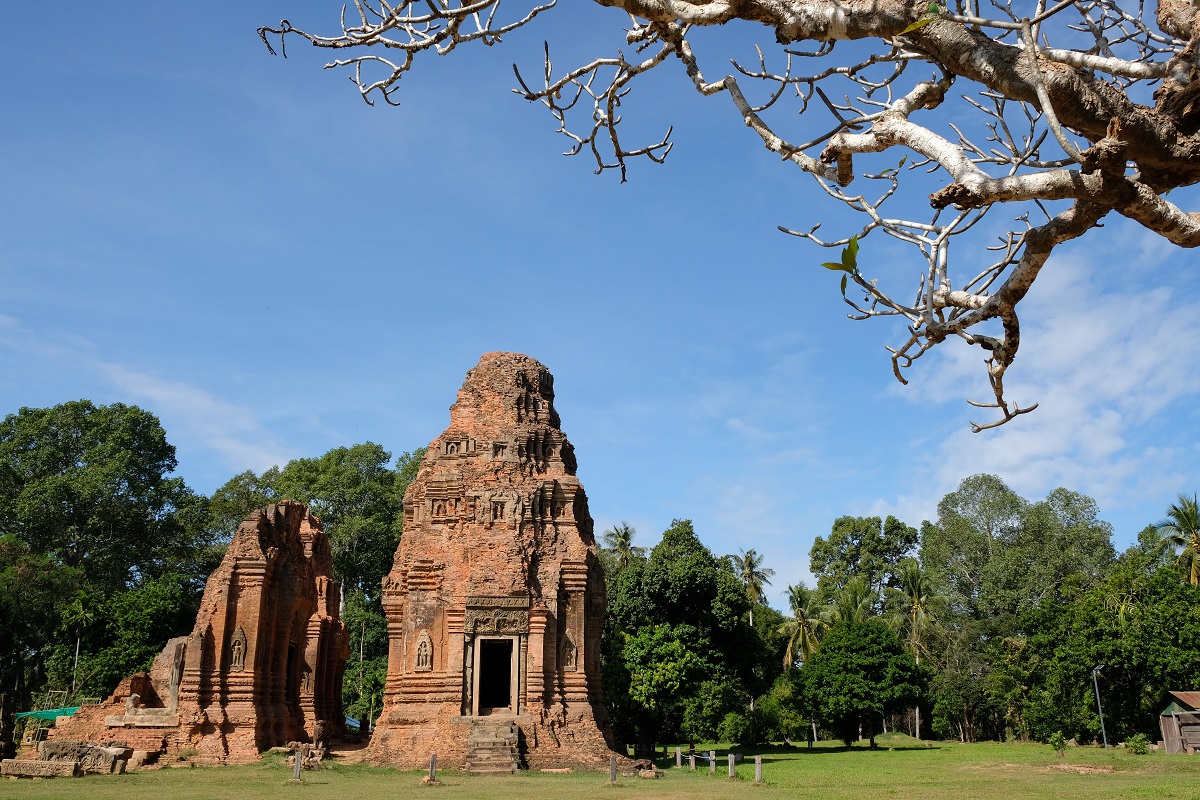

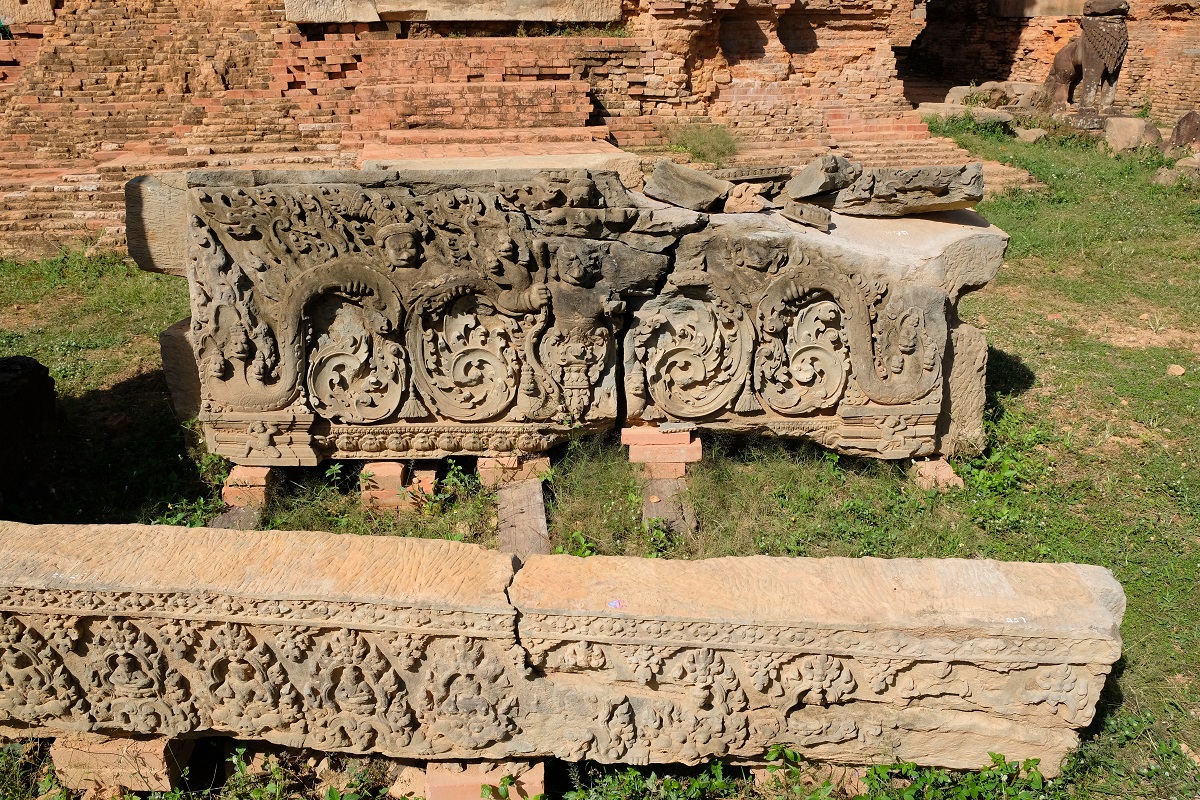

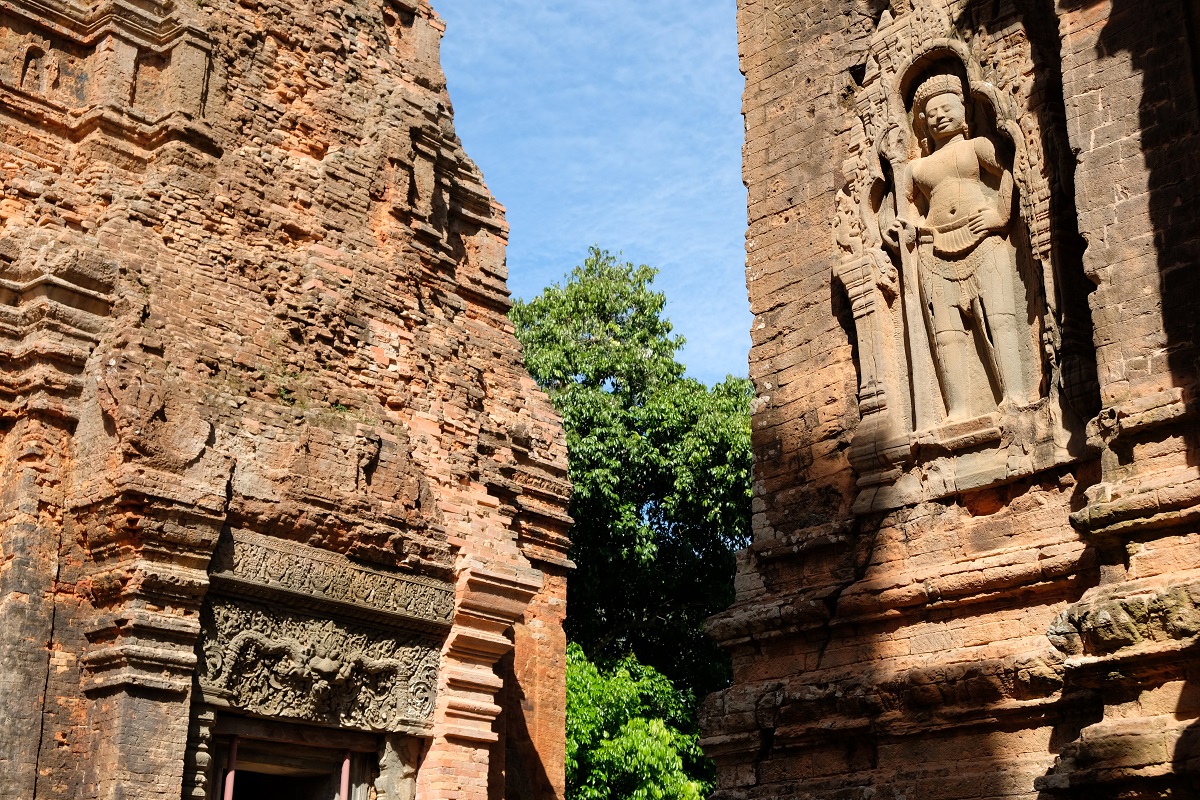

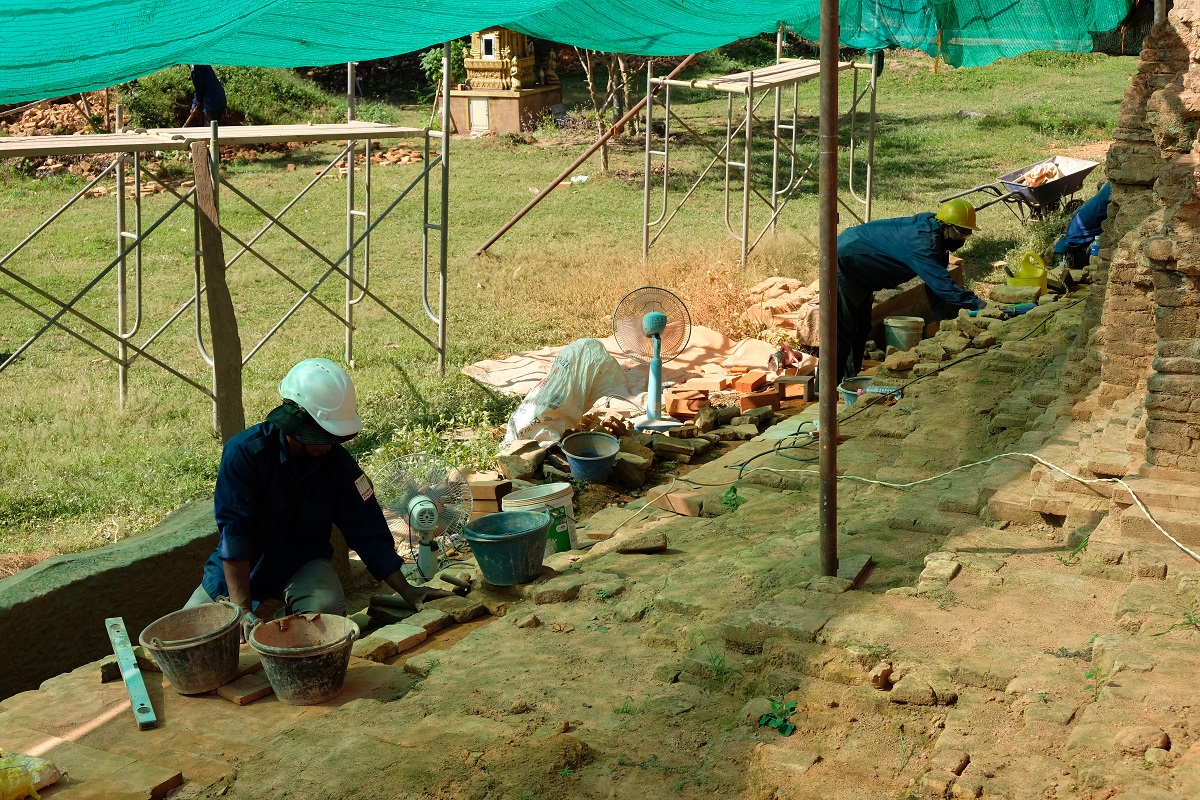


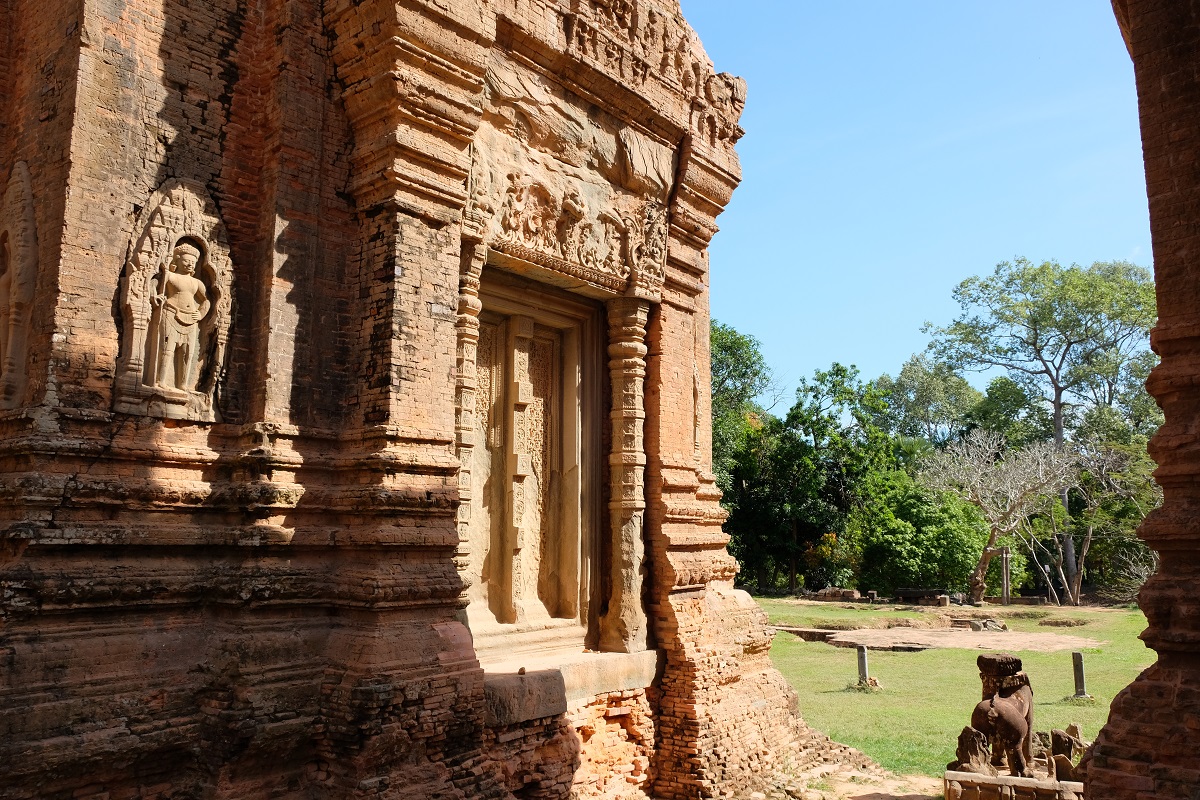
Interesting. Hariharalaya – it means temple of Hari (Vishnu) and Hara (Shiva).
LikeLiked by 2 people
That’s right, Pandian. Thank you for adding this information. I remember reading about how in the past the Khmer society was divided between Shaivites in the hinterland and Vaishnavas in the coastal regions, which probably explains why Hariharalaya was chosen as the name of the capital. I have to dig deeper into this.
LikeLiked by 1 person
Hariharan is a common Hindu back in India. At one point of time both shaivam and vanishnavam schools wanted to merge. Hariharan May be the word emerged from from this merger 🙂
LikeLiked by 1 person
That totally makes sense.
LikeLiked by 1 person
So interesting
LikeLiked by 1 person
Yet there are not that many people visiting this group of temples.
LikeLiked by 1 person
Such a great article Bama! I appreciate the effort you put into your posts! Mine pale in comparison because I am just so busy (and sometimes lazy lol). I never got to this group of temples but they look fascinating. Good job mate!
LikeLiked by 2 people
Much appreciated, Anna. Your posts are cool too! I just happen to be really into ancient temples because I grew up visiting some spectacular ones on Java and have been fascinated by them since I was little.
LikeLike
I think having an interest in a topic definitely helps with the writing process of the blog. Since I’m super interested in the Levant/Middle East region I found I was more thorough in my Jordan pages. I loved the history of Cambodia but just found there were so many gods and rulers that sounded so similar! I got confused! I’ve definitely learnt more about SE Asia through your blog that’s for sure! X
LikeLiked by 1 person
I wonder if the -varman suffix makes things even more complicated for you because after a while they all might start to sound the same. The history of the Levant is extremely fascinating as well. I surely learned a little bit about the gods and goddesses the ancient people in this part of the world worshipped when I traveled to Lebanon and Jordan in Year 1 BC (Before Covid!).
LikeLike
I would like to say its the -varman suffix that confuses me but I think its just more the fact I’m getting old and losing my mind. 🤣🤣🤣
LikeLiked by 1 person
Lol! 🤣
LikeLiked by 1 person
I just typed very similar thoughts!
LikeLiked by 2 people
Lol!
LikeLike
Great writing Mas Bama! I just know about these temples. I hope one day, I can visit this place.
LikeLiked by 1 person
Thank you, Mbak Ira. You need a tuktuk to get to these temples from Siem Reap, but the journey itself was pretty straightforward.
LikeLiked by 1 person
I wonder if that panel of script has been interpreted. Such inscriptions, like those on ancient Indian temples, reveal interesting details of the times and would throw a greater understanding on the site.
LikeLiked by 1 person
It must have been because that panel was still very much intact. Inscriptions are indeed primary sources of information about ancient sites. Without them one can only guess.
LikeLiked by 1 person
It’s amazing how much freedom there is in religious sculpture. The iconography of the Buddha changes so much across Asia. The same is true of the representation of Hindu deities as well.
I also found the name of Jayavarman’s capital city very interesting. Harihara is a composite deity merging Vishnu (Hari) and Shiva (Hara), and Hariharalaya would be the place where Harihara resides. Since you see both Nandi and Garuda, clearly both figured in the religious practice of the kingdom. Sorry about being so esoteric, but the name of the capital city is quite remarkable.
LikeLiked by 1 person
That’s very true, I.J. One can make an educated guess where an image of Shiva or Vishnu was made just by looking at its artistic styles whether it’s Javanese, Khmer, or Cham.
I also find it interesting that Jayavarman II chose that name for the capital of his empire. When you go to other ancient Khmer temples near Siem Reap, you’ll notice how in the past both Shiva and Vishnu were equally venerated by different kings, and this is evident especially at a handful of sites which I will write about in future posts.
LikeLiked by 1 person
I try to read some of the history before visiting many of these places but find much of it too disorganized and without explanations for those of us with no knowledge. But the way you describe it makes it more interesting and easier to relate to the temples you’re showing us. I would love to visit Lolei, the carvings on the lintels are so impressive. Maggie
LikeLiked by 1 person
I agree. It can feel overwhelming when looking up information about the history of a place. But I usually put important events and figures on a chronological map to get a clearer picture of how things progressed through time. From there, it’s usually relatively easier to connect the dots with other events happening elsewhere in the region at a certain point on the map. Those intricately carved lintels were indeed enough reason for me to go to this group of temples.
LikeLiked by 1 person
These are beautiful places, Bama. It’s interesting that in those days, despite geographic distances, rulers often created large and beautiful temples to honor both their religions but to also leave a legacy behind for their countries and their families and wives. It’s a common characteristic across different cultures.
The intricate detailed craftsmanship is unrivaled and a level of work we don’t see in today’s architecture and it’s why these last the test of time. It’s nice to see the work of the conservators to help ensure these places can be enjoyed by future generations.
And I do love the word disruptor. These are the individuals that help shape history and culture that are still studied and enjoyed centuries later.
LikeLiked by 1 person
Absolutely. It’s hard to imagine building things on such a grand scale today without much controversy!
Realizing how much I adore intricate carvings at ancient sites, I wonder if in another life I would prefer to be a sculptor! I’m really grateful we have archaeologists and conservationists whose days and nights are dedicated to unearthing mysteries from the past and preserving them for future generations.
Actually the idea for me to include the word disruptor in this post came after watching Glass Onion on Netflix. 😀
LikeLike
Bama, it amazes me that the guardian statues at Preah Ko and Lolei are still in such good shape even after more than a 1,000 years of exposure to the elements. That attests to the skill of the ancient Khmer sculptors and the fact that they chose the “right” kind of stone for the statues. I don’t think any of the massive glass-and-steel structures built in cities these days will have the same sort of staying power. And how wonderful that Pandian and I.J. were able to share the meaning of the name Hariharalaya – I would have had no idea otherwise!
LikeLiked by 1 person
I think back then when they built something monumental, it was meant to last forever. That’s why they put so much effort in making it grand and beautiful. But today, function is the most important thing. Not that it’s wrong, but unfortunately this often sacrifices the beauty aspects of a design. I think in Java, Harihara was a known concept but wasn’t depicted as ubiquitously as it was in other places in the region. The most famous Harihara image ever created on the island is the one discovered at Candi Simping as a manifestation of the first king of Majapahit.
LikeLiked by 1 person
I love the term you use for ‘disruptors’ ~ I have never heard it, but it does fit the times so well. When reading this post, I have learned so much… you do such a great job of reviewing the history with the added beauty of your photos. Impressive, Bama, and I wish I had known this when I traveled there so long ago (maybe 15 – 20 years ago); it would have made the trip even richer than it was, and how I loved Cambodia. I do remember Preah Ko quite well, as I had met up with a few Koreans and told them about Preah Ko, so we went together. From Preah Ko to Lolei and then the incredible Angkor Wat – the mastery and skill of the people and their spirit of creativity and achievement are so inspiring. The accomplishment in building these structures is mind-blowing, and understanding this history a bit more now makes a lot of sense.
LikeLiked by 1 person
I believe that term was first used at the beginning of the tech startup boom when suddenly everyone wanted to be a disruptor.
Thanks Randall. Wow! Basically you went not long after the first Tomb Raider movie came out. Sometimes I like to re-watch the scenes filmed at Angkor and imagine how much quieter those ancient temples must have been back then. But even today, it’s hard not to be impressed by the sight of Angkor Wat for the first time with its iconic spires rising in the distance. And learning the history of the Khmer Empire certainly helps us appreciate more of those magnificent temples.
LikeLike
These temple compounds are impressive. It’s is a great way to remember our past and the key figures that helped shape our history. It’s funny how these structures just got bigger and more intricate as a way to set themselves apart. Thanks for taking us along for a tour.
LikeLiked by 1 person
And yet we can still see this pattern repeating to this day with skyscrapers that keep getting taller and taller. I guess it’s human nature to build something bigger, higher, and more beautiful. The sky isn’t really the limit. Our imagination is.
LikeLiked by 1 person
I work so hard to keep all this info straight in my head, but it’s a struggle! It’s like reading a Russian novel and having to repeatedly look back at the list of characters and places in the front of the book. Part of it is the foreignness of the words and names themselves, but it’s also a matter of just not having the long-term steeping in the entire region’s history that you do. Long way of saying thanks for continuing to help educate me!
LikeLiked by 2 people
You say it more eloquently than me! Im just like “I’m confused!” Lol!!
LikeLiked by 2 people
Believe me, I often think “I’m confused!” (Or maybe “I’m too lazy to try to remember all this!”)
LikeLiked by 2 people
Ha! And believe me, I tried to organize all the information in a more orderly fashion to make it easier to digest. Out there, it’s a jungle of foreign names and sometimes contradictory data that also got me confused from time to time.
LikeLiked by 1 person
What a fascinating place Bama! You always have so much knowledge of the history and culture of a place. I love learning about it all. Would love to check out this part of the world someday. So much more to see!
LikeLiked by 1 person
Thanks Nicole. I wouldn’t say I always know about the history of a place prior to visiting it. The learning actually often happens afterward. But it does help to read a little bit about what I want to see, at least to know what to look for and where when I’m traveling to a new place. I hope you’ll get to Cambodia one day!
LikeLike
I would like to say exactly what Lexie said! I never would have learned this history in any other way.
Alison
LikeLiked by 2 people
That’s why I always include photos (sometimes a bit too many) in my blog posts because I know how overwhelming learning history can be, even in a condensed format. 🙂
LikeLiked by 1 person
Never too many photos!
LikeLiked by 1 person
Yes!!!
LikeLiked by 1 person
It’s so cool to see these lesser-known but still-spectacular temples. Personally, I love being able to wander through ancient ruins without the hordes of tourists (some of whom can be a bit noisy and obnoxious) that you see at places like Angkor Wat. Love the pic of the conservation work too – a thankless but immensely important undertaking!
LikeLiked by 1 person
Personally, I prefer that too. Usually the key to visiting famous places with minimum number of tourists is to go there as early as possible — although this doesn’t necessarily work at sites where people go to see the sunrise. It was really cool to see those people working on one section of Lolei, to know that even today such work is still being done to preserve the country’s ancient heritage.
LikeLiked by 1 person
What a fascinating temple and history. You’ve got a knack for this (judging from your blog and the response to the comments). I do like how you prepare for your travels and organize all the information. I think the next time I travel, I’ll check out your blog first (and James’s too).
Take care!
LikeLiked by 1 person
When I started this blog in 2010, I wasn’t really thinking of what this would become and what kind of blog posts I would enjoy writing the most. But as you can see, the pattern is clearer now. 🙂 In the process, I learn a lot more about a place than I would have if I hadn’t had a blog.
Hope you’ll be traveling soon, Matt!
LikeLiked by 1 person
I always marvel at the amount of research that goes into your posts, Bama. Not to mention the way you make it easy to read and follow. And your photographs alone ensure that I feel I’ve been there with you. It brings back beautiful memories of my own trip, but even if I’ve never been, I would feel that I have. Thank goodness for dreamers, visionaries or disruptors. The world would be less interesting without them.
LikeLiked by 1 person
Much appreciated, Jolandi. I have to say there were several occasions in the past where inaccuracies made their way into my posts, and I’m sure even today and in the future this will still happen. I’m constantly trying to minimize this, although I have to say it’s not always easy.
LikeLike
It is almost inevitable that inaccuracies will creep in, Bama, especially as I personally know that one often finds contradictions even during research. It isn’t always easy to fleece out all the details and layered histories of places, so I commend you for your commitment to not only write about it, but also to write accurately about it.
LikeLiked by 1 person
I’m impressed with the temples and how well preserved they are! I love the intricate details of the Garuda and Nagas. By the way, I just read the story of Garuda and Nagas and I found it so interesting. It reminded me of the story of the symbol in the Mexican flag, a majestic eagle clutching a snake.
LikeLiked by 1 person
I’ve also read the story of the eagle and the snake. It’s quite fascinating we’re still able to learn about these things today as they provide us with a glimpse of the cultures, beliefs, and creativities of ancient peoples across the world. I think for many Indonesians Garuda has a special place in their hearts because this mythical creature not only is depicted in the country’s emblem, but also used as the name of the national carrier.
LikeLiked by 1 person
That was such an interesting read! The history behin those temples and complexes is truly fascinating! I’m also amazed at the level of details of those carvings! Thanks for sharing!
LikeLiked by 1 person
Those temples really are such marvelous monuments from the past, aren’t they? Their preservation allows us to learn about who built them, the artistic achievements of the local sculptors, and how this place is related to the others in the region.
LikeLiked by 1 person
Very educational. Thank you!
LikeLiked by 1 person
And thank you for reading!
LikeLike
A fascinating read and beautiful photos that spark my nostalgia for the wonderful place that Cambodia is as a whole. The history you reveal so well in your article is complex and intricate. We didn’t make it to these temples, I don’t remember why. But it was lovely to look at your photos and find familiar details and similarities with the ones we did see.
LikeLiked by 1 person
How fascinating that country really is, isn’t it? I hope if you return to Cambodia one day and at one point happen to be around Siem Reap, you’ll get the chance to see Roluos. Those temples were a lot more peaceful than their counterparts in Angkor.
LikeLiked by 1 person
It’s good to learn about how the Angkor Empire began. It would be fascinating if the Java which it broke away from is that from Indonesia. I think I heard about the Roluos temples when I was there, but I didn’t go see them, so I’m glad you managed to do that.
LikeLiked by 1 person
It would be even more intriguing if the Java the inscription referred to was in fact the very island I live in. There were so many connections among nations in the region in the past many people today are simply unaware of. It’s understandable why most tourists who visit Siem Reap missed Roluos because it’s not located along the main route people take to see the more famous sites. But if you get a chance to go back to this part of Cambodia, I really recommend making a detour to this group of temples.
LikeLiked by 1 person
I hope that Cambodian and Indonesian historians and archaeologists can come up with more information about this in the near future. I do remember your previous posts about Javanese temples that resemble the ones in Angkor.
If I do return to Angkor, I will certainly visit Roluos.
LikeLiked by 1 person
Superb photos and narration of history Bama. I remember how captivated I was by that little broken Nandi. The temples seem to have been cleaned up a bit, there was grass like vegetation growing out of the spires when we went.
LikeLiked by 1 person
It’s good to know that temples that are a bit further away from Siem Reap receive a fair amount of treatment and maintenance. Was it also rather deserted when you went?
LikeLike
Completely! We were the only ones there. Even in temples like Prasat Kravan.
LikeLiked by 1 person
Prasat Kravan is the one I most want to see the next time I go to Siem Reap. I don’t know why we skipped that temple.
LikeLike